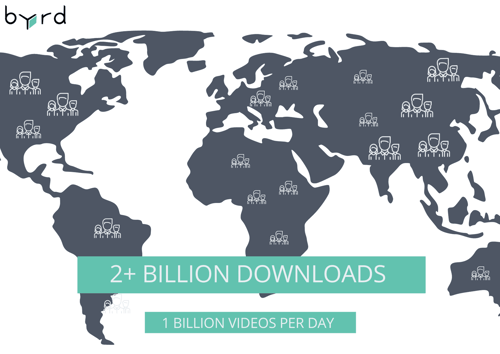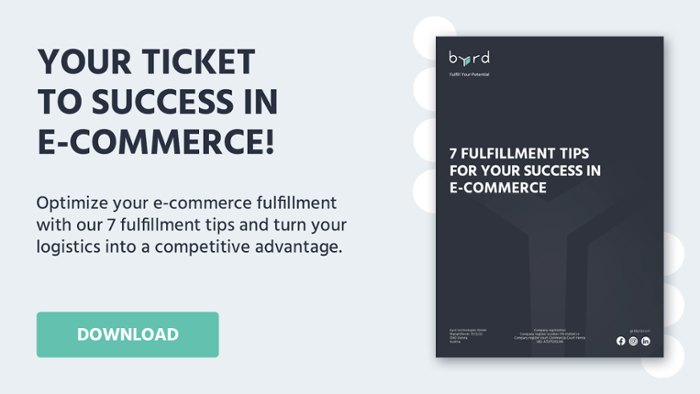The TikTok Phenomenon
Table of Content
What is TikTok?
Before we try to understand what makes this app so successful and what could be the secret of its success, let's take a step back and begin with a short overview of the founding phase.
The app was launched in China in September 2016 as Douyin by its parent company BytteDance. In the following year, it was also launched outside China under the name TikTok. It is interesting to note that Douyin was developed in only 200 days. With the purchase of Musical.ly for one billion US dollars, which enjoyed great popularity, especially in the USA, the parent company once again figuratively blew wind into TikTok's sails. Although Douyin and TikTok are hardly any different, they run on different servers to comply with Chinese censorship regulations.
But what exactly makes TikTok an attractive partner for e-commerce companies and how does the app differentiate itself from its competitors?
User Numbers on TikTok
Right now, there is probably no faster way for online businesses to be seen by young people than with the help of TikTok. Currently, TikTok has 1.677 billion users worldwide, with 1.1 billion using it every month. Within the span of 3 years, TikTok has managed to reach as many monthly users as Instagram did in 6 years. To reach one billion users, TikTok (2 years) took only a quarter of the time compared to the top dog Facebook (8 years). In the first quarter of 2020, TikTok broke the all-time record for apps as downloads amounted to 315 million.
Moreover, the top 50 Creators (that's the name of the active users) have more followers than inhabitants of Mexico, Canada, the UK, Australia, and the USA together (which accounts for almost 8% of the world population). In terms of downloads, TikTok reached 1st place in 2022, leaving behind other industry giants such as Instagram, WhatsApp, Spotify, etc. This makes the Chinese company the only brand within the top 5 that does not belong to the Facebook group. So, despite the young age of the network, social media giants like Twitter and YouTube have been left behind by TikTok.
TikTok's Strategy
The mission of the network is to enable creativity, knowledge, and the precious moments of life to be captured and shared easily and directly with the mobile device. What differentiates TikTok from its competitors is that it is more of an entertainment platform than a lifestyle platform. It is mainly used to share short videos (5-15 seconds). These videos are often related to music and are intended to be funny, emotional, or impressive and thus entertain other users. Over one billion such videos are shared every day.

Target Group of TikTok
As already mentioned beforehand, the target group of TikTok consists of predominantly young people. In July 2023, statistics revealed that around 20 percent of TikTok's worldwide user base consisted of females aged 18 to 24, while males in the same age bracket accounted for roughly 17.8 percent of the platform's audience. These users also represent an extremely attractive target group for e-commerce.

Furthermore, TikTok users, the majority of whom come from India, China, and the USA, are characterized by an above-average level of commitment. While many apps are often only downloaded, used once, and then forgotten, 90% of TikTok users use the platform daily. In fact, the network is opened 8 times a day per person on average.
TikTok and E-Commerce
It's hardly surprising that TikTok wants to get the most out of its sizeable user base. Looking at the internet-savvy target group, e-commerce naturally plays a decisive role in this. Since November 2019, the operators of TikTok have been testing so-called social commerce. Social commerce includes e-commerce links that enable the purchase of various products within the app and represents a new method for progressive marketers to advertise and sell their own products.
Creators help to humanize brands and are seen by many enthusiastic, mostly young people. This is what almost every e-commerce entrepreneur dreams of. Also back in October 2020, the platform announced cooperation with Shopify to enable the more than one million merchants using the Canadian shop system, to reach the younger audience on TikTok. This makes in-app shopping possible, which further pushes the social commerce aspirations of TikTok.
Furthermore, the almost non-existent hurdles speak for an advertising attempt as a growth-oriented e-commerce company at TikTok. The platform enables managers and ambitious marketers to experiment with a new promising phenomenon and to develop new target groups.

In the present day, TikTok assumes a pivotal role within the e-commerce sector, acting as a vibrant platform for product promotion and marketing. Remarkably, 83% of TikTok users report that trending content on the platform has motivated them to make purchases. The hashtag #tiktokmademebuyit has garnered a staggering 42 billion views, underscoring the platform's substantial impact on driving consumer purchases.
TikTok's pivotal role in bolstering retailers' growth and connecting them with highly engaged audiences in the evolving landscape of online commerce. Notable statistics from his presentation include the fact that 92% of TikTok users take action after consuming platform content.
So, what is the reason for only a few companies becoming active, and what opportunities are there for e-commerce companies to promote their own brand through this innovative channel and increase sales?
Why many E-Commerce Companies do not involve with TikTok
Besides all the positive news and ever-new records of downloads and monthly users, negative news about TikTok keeps emerging, rendering small and large concerns still that prevent many entrepreneurs, in e-commerce and beyond, from using this social media platform for advertising and sales. Here are a few points you should consider before "tackling" this challenge.- Marketing ethics
- Data security
Marketing ethics
The Chinese company has had some serious problems with the ethical justification of its marketing measures and, moreover, its business model. Last year, for example, there was an increase in bad publicity. Among other things, the company was criticized for its poor handling of children's data. In April 2019, TikTok was even banned in India because not enough attention was paid to children and their safety on the Internet. However, due to ad hoc adjustments to address this issue, the verdict was reversed after a short time, as in a similar case from Indonesia.
Data security
In addition to the reasons already mentioned, the concern for data security at the Chinese company plays a decisive role in why some e-commerce companies shy away from this social media app and do not dare to cooperate. Articles such as the one in the New York Times fuel the fears that some platforms like TikTok are enabling the Chinese government to illegally collect protected private data from foreign entrepreneurs and keeping censorship in its own country under control.
Because of all these problems, TikTok has announced that in 2020 it will pay close attention to data security and the well-being of young users.
Advertising on TikTok
There are different ways to advertise on TikTok:
- Hashtag Challenge
- Biddable Ads
- Brand Takeover
- Branded Lenses
TikTok's Hashtag Challenge
The Hashtag Challenge is a game that invites and encourages users to create and post content under a sponsored hashtag. The products can then be purchased in the app itself.
The US grocery store Kroger was the pioneer with the #TransformUrDorm Challenge. The challenge involved students transforming their rooms into student dormitories and posting short videos of the change. They were also invited to buy products such as coffee machines and other household appliances from Kroger. Four TikTok Creators were hired to make the hashtag more popular. This sponsored hashtag now has nearly 500 million views for hundreds of different videos and shows the potential of this method for e-commerce companies.
Costs: A fixed rate of $150,000 for a six-day duration, and companies may allocate additional funds to promote the challenge further.
TikTok's Biddable Ads
These are advertisements that appear when users "scroll". These advertising messages fly, so to speak, through the feed and thus only disturb the users minimally. Currently, TikTok offers e-commerce companies the ability to select or exclude the target group based on gender, age, and location. The costs can be allocated in three different ways. These are Cost per Click (CPC), Cost per Impression (CPM), and Cost per View (CPV).
Costs: From about $500 per day (depending on reach, target group, etc.)
TikTok's Brand Takeover
So-called brand takeovers are the most extreme form of advertising on TikTok and are therefore limited to one advertiser per day. The advertising brand takes over the start screen. With a click on it, the user is redirected to another page.
Costs: $20 000 - $200 000 per day (Digiday, 2019)
TikTok's Branded Lenses
These are 3D stickers and various face filters that can be used to tell funny, creepy, or simply beautiful "stories". They increase engagement with the app and are generally comparable to the Augmented Reality (AR) filters from Instagram and Snapchat.
Influencers boasting 2.5 million followers or more typically command fees ranging from $600 to $1,000 per post. This stands in stark contrast to Instagram, where influencers with 10,000 to 20,000 followers generally charge between $100 and $200 per post, as reported by the Telegraph in 2019.
As in every area of marketing, make sure to know what your actions lead to and what the results are. Yes, we are talking about analytics. For that, TikTok offers in-app analytics that can help you track your performance. In order to be able to use it, you have to change to the pro account which is easy to do and free.

How can Your E-Commerce Business benefit from TikTok?
As an ambitious e-commerce entrepreneur, you are now asking yourself how can you take advantage of this opportunity and strengthen your brand using TikTok.
There are a lot of ways in which a TikTok e-commerce strategy can increase your sales for your e-commerce.
Start Your own Channel
Upload relevant and interesting content yourself. This method is one that is done in-house and can have very positive effects on your brand recognition and social media presence.
Cooperate with Influencers and Creators
This method can be very efficient, but as on any other social media platform, it can also "go nowhere". Therefore, make sure that the influencer in question is also a good "fit" for your brand. So, collaborate with the right person and distribute your content within your target group in a comparably cost-saving way.

Global visibility + new generations
TikTok is a global platform that offers e-commerce companies the opportunity to participate in global conversations. Viral trends and challenges on TikTok can spread globally in a matter of days, allowing your product to reach audiences in different countries. Also, this platform is particularly appealing to the younger generation, especially Generation Z, which has a strong inclination towards video consumption.
Conclusion
TikTok should certainly continue to be observed by every marketer in e-commerce, even though there are some critical aspects to consider. The company's development in some unpleasant areas should also continue to be monitored closely. If the app's target group matches that of your online shop, TikTok is undoubtedly an attractive alternative, or in most cases rather an addition to your existing social media presence. The further development of the network in Europe remains a worthy topic to pay close attention to. If TikTok "picks up speed" as much as in the American and Asian markets, there will soon be no way around it for e-commerce companies.